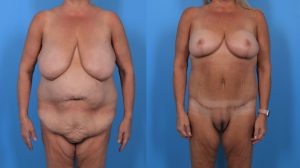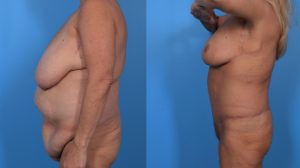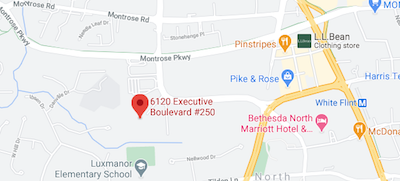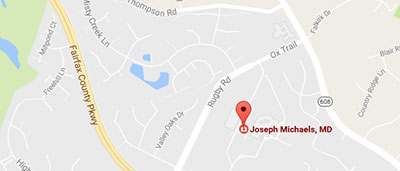Have you achieved massive weight loss and are left with a significant amount of excess skin? With the rise of medically-assisted weight loss procedures such as bariatric surgery and gastric bypass, more and more people are experiencing dramatic weight loss.
Body contouring procedures can help you achieve the body shape you desire, allowing you to realize the true extent of your weight loss achievement. Following body contouring procedures, our weight loss patients achieve a new sense of self-confidence and self-esteem, thanks to our beautiful, individually-tailored results.
If you are amongst the many thousands of patients who have undergone medically-assisted weight loss surgery, bariatric surgery, or gastric bypass and have lost more than 50 pounds, you may develop sagging, stretched skin. Once the skin and tissue have been strained past a certain extent, the only true, permanent solution is surgical intervention. We offer a variety of post-Weight Loss surgeries is to address functional or cosmetic issues and restore your body’s natural figure
Contents
Dr. Joseph Michaels – Body Contouring Expert
Dr. Michaels is a board-certified plastic surgeon that specializes in body contouring. He is one of a few plastic surgeons in the United States to have performed a fellowship specifically dedicated to body contouring and plastic surgery after weight loss surgery.
Dr. Michaels is current with the latest safest techniques in body contouring. We offer comprehensive care and we work closely with your other health care providers to help ensure that you achieve beautiful results under the safest conditions. Dr. Michaels will carefully listen to your goals and will tailor a safe treatment plan to your exact needs.
What areas can be treated with After Weight Loss Surgery?
Many areas of the body where there are significant amounts of excess skin can be treated surgically.
Arm Lift
An arm lift removes sagging skin from the upper arms and armpit area that create the appearance of “bat wings.”
Thigh Lift
The thigh lift address masses of excess skin around the inner and outer thighs.
Panniculectomy
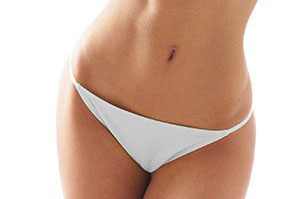 A panniculectomy is a functional procedure that removes excess skin that drapes around the midsection and hangs from the abdomen.
A panniculectomy is a functional procedure that removes excess skin that drapes around the midsection and hangs from the abdomen.
A panniculectomy is considered medically necessary and is typically covered by insurance.
Mons Rejuvenation
A belly bulge or excess tissue on the mons pubis can cause hygiene issues and irritation. A Mons Rejuvenation removes excess tissue from the area between the bikini line and genitalia.
Breast Lift

Tummy Tuck
Tummy tucks, or the abdominoplasty, flatten and contour the abdomen by removing excess skin and tissue. Tummy tucks also repair stretched abdominal muscles.
Upper Body Lift
Upper body lifts address rolls and flaps of extra skin that drape off the upper back. Often, this treatment is paired with an arm lift or breast lift for comprehensive upper body restoration.
Lower Body Lift
The lower body lift is a combination of several different surgical procedures with an overall focus on reshaping the thighs, abdomen, and buttocks.
After Weight Loss – FAQs

Unfortunately, it is unlikely for stretched, sagging skin to recover its natural shape. A surgical procedure to remove excess skin and restore the body’s natural figure is called after weight loss body contouring.
What is After Weight Loss Body Contouring?
After weight loss body contouring that may involve a combination of surgical procedures such as an arm lift, thigh lift, lower body lift or upper body lift. These surgical techniques are aimed towards restoring a patient’s natural figure and relieving health, mobility and hygiene issues that are caused by large amounts of excess skin.
When is the best time to undergo body contouring surgery?
Ideally, patients should be “weight stable” meaning they’ve completed the majority of their weight loss and are maintaining a steady weight. If you’ve had bariatric surgery, you may start to consider after weight loss body contouring as soon as six months after your procedure, but the actual treatment date will likely be at least 12 months after the bariatric procedure.
Why Do I Have Excess Skin?
Sagging skin occurs when your skin stretches to fit your body’s contour.
When weight loss is dramatic and there is a relatively sudden change in body size, your skin may not be able to retract. The skin’s ability to reshape and reform will vary from person to person due to a variety of factors like lifestyle habits, aging, and genetics, all of which affect an individual’s skin elasticity.
What if I still plan to lose weight?
After Weight Loss Body Contouring is recommended for individuals who have reached or are within reasonable range of their healthy weight. If you are planning on losing additional weight, you should postpone any body contouring treatments because additional weight loss may result in even more sagging skin.
Will My Sagging Skin Eventually Retract on its Own?
Although some patients may experience some skin retraction and recovery of their natural body shape, it is rare. Older patients also generally experience less skin retraction and recovery. Age, habits like smoking, and genetics also play a significant role in the amount your skin can recover after stretching.
How Much Will After Weight Loss surgery cost?
After weight loss surgery costs are dependent on the specific techniques and areas to be treated. The surgical plan is always entirely tailored to the patient’s personal goals, striking a balance with what is appropriate for your personal anatomy.
If the treatment is medically necessary, such as with a panniculectomy, your insurance provider may cover the cost of surgery.
For more information on each type of treatment, see the dedicated pages or call Dr. Michaels for a personalized consultatio








